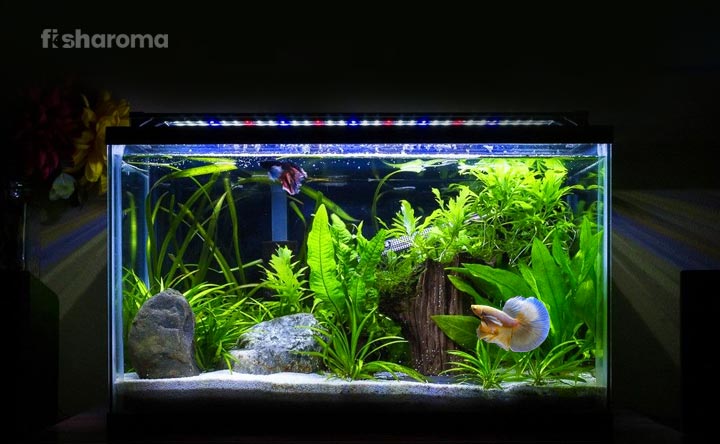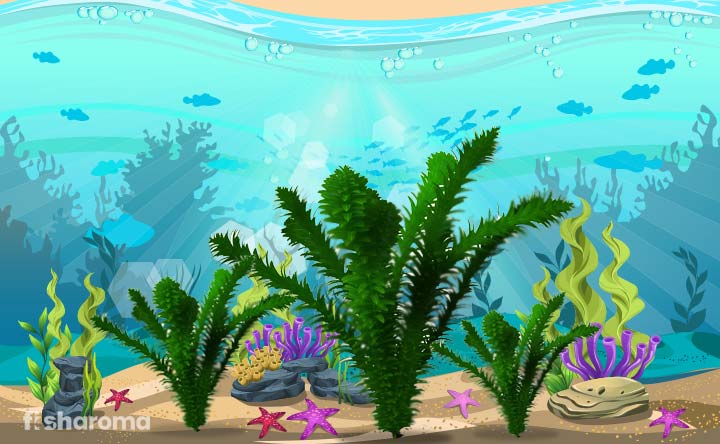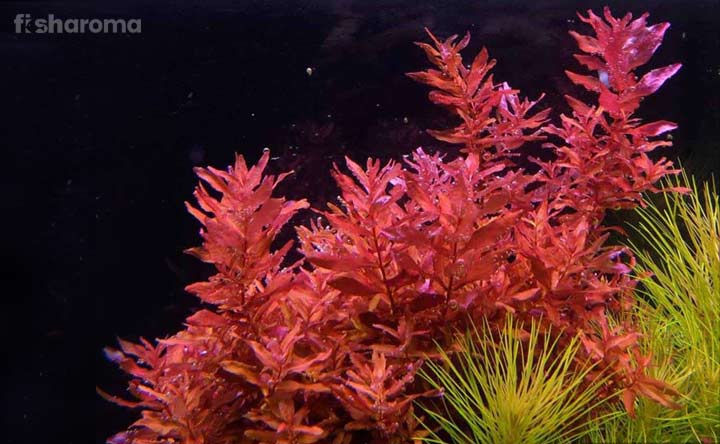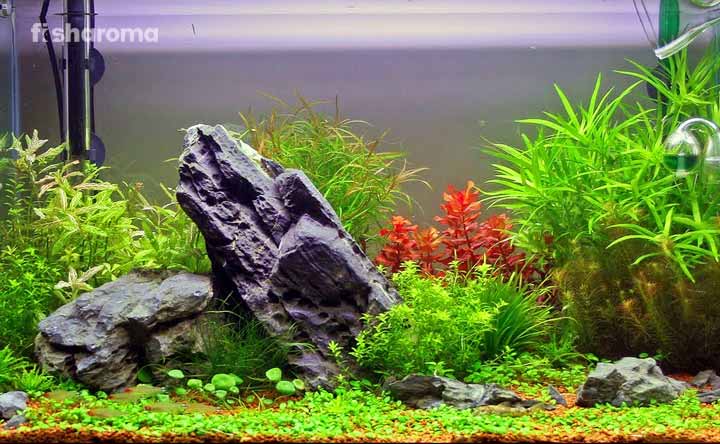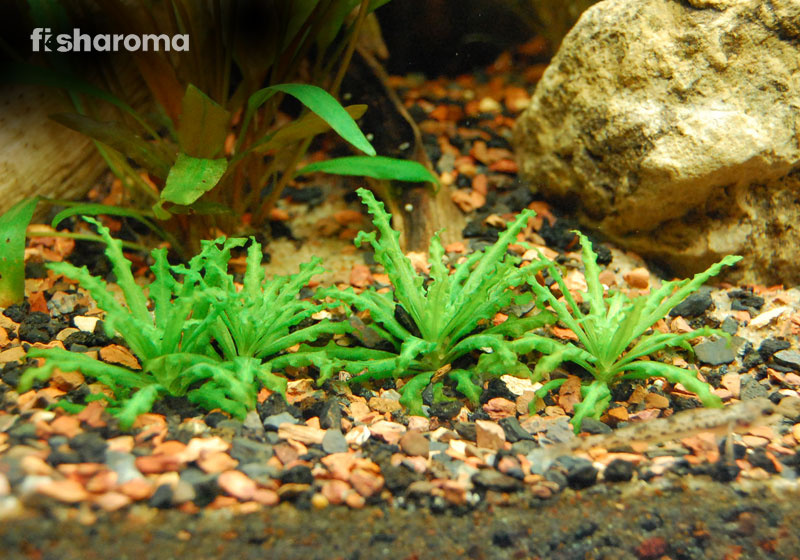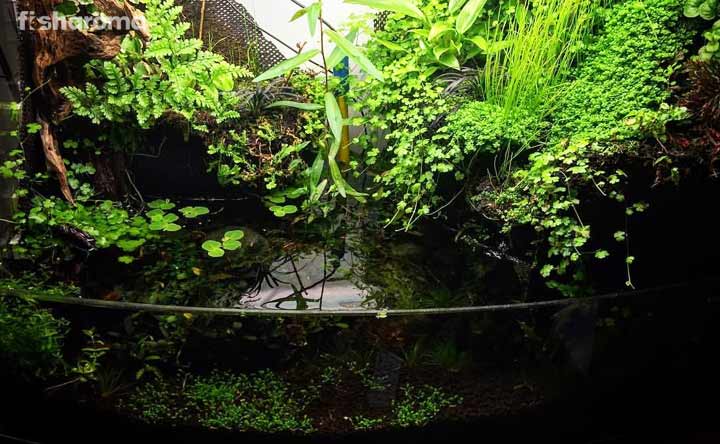Staurogyne Repens – The Complete Care Guide to Grow Them Healthily
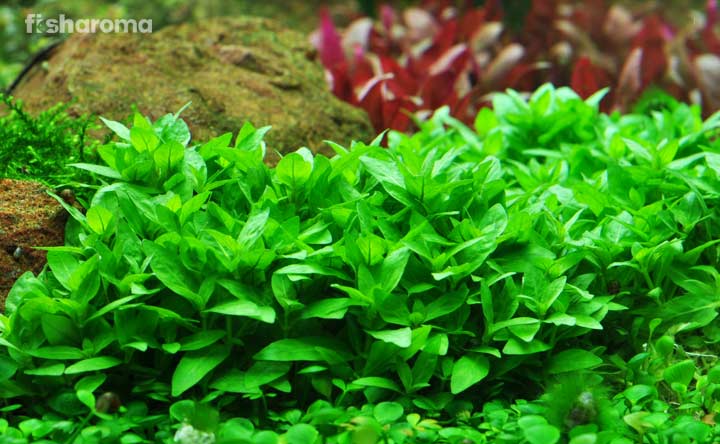
- Origin & Habitat of Staurogyne Repens
- Appearance of Staurogyne Repens
- Benefits of Staurogyne Repens
- Tank Requirements for Staurogyne Repens
- Water Type for Staurogyne Repens
- Plantation Procedure of Staurogyne Repens
- Care & Maintenance of Staurogyne Repens
- Propagation of Staurogyne Repens
- Compatibility of Staurogyne Repens
- Summary
A freshwater aquarium without plants is very much like a field without trees, and you can imagine how mundane, dull, and unhealthy that can be! At the same time, we also understand that many aquarists don’t want to take up the additional responsibility of having to take care of plants along with their aquatic pets. Thus, we are here to talk about a hassle-free aquatic plant that you can grow in your aquarium without breaking a sweat. Staurogyne Repens can fulfill all of these requirements. Let’s learn how to propagate them, plant them, and grow them healthily in your household with our comprehensive Staurogyne Repens care guide.
Key Specifications of Staurogyne Repens
First and foremost, you need to brush up your brain with some of its key specifications from the following table.
| Scientific Name | Staurogyne Repens |
| Family | Acanthaceae |
| Care Level | Easy |
| Size | 4” (10 cm) |
| Growth Rate | Slow |
| Tank Size | 10 Gallons |
| Lighting | Moderate to high |
| Water Conditions | 68-86° F (20-30° C), pH – 6-8, dKH – 3-10 |
Overview
A ground-covering freshwater aquatic plant, Staurogyne Repens is extremely easy to care for and maintain. It is pretty hardy by nature which speaks a lot about the fact that it can be reared by beginner aquarists. Not only is it used for decorative purposes, but it is also used for elevating the quality of your water. So, it is no wonder why its popularity is so high among aquarists.
It belongs to the Acanthaceae family, which in itself has more than 2,500 species under its belt.
Origin & Habitat of Staurogyne Repens
Native to South America, Staurogyne Repens has its origin in the state of Mato Grosso in west-central Brazil, mainly in the Cristalino River. Although it is primarily known to grow on stones and stone-based soils, it has recently been discovered that it can survive underwater too.
Studies regarding its DNA have revealed that it is closely related to Hygrophila, although there are stark differences between the two.
Appearance of Staurogyne Repens
Staurogyne Repens have bright light-green leaves that are much brighter when compared to other hardy aquatic plants such as Hornwort. The leaves are densely packed, which means it’s a great option for those who are looking for a green carpet over the substrate of their tank. Its stiff brown stem helps it in holding the whole plant in an upright position. The stem is extremely branchy and coarse, and its trail will reach the bottom of the tank.
The carpets will grow up to 2-4” (5-10 cm) tall and your plant will have an oval-shaped lamina that is 1.7” (4.5 cm) large.
Speaking about the shape of the leaves, they have the classic leaf-shaped leaves with a broad base and a pointed end. The roots will be white in color and thin by nature. Sometimes, the roots grow upwards in order to collect nutrients from the water.
Benefits of Staurogyne Repens
Just like other freshwater aquatic plants, Staurogyne Repens comes with a bunch of benefits. Let us take a look at some of the most prominent ones among them.
- Helps in forming a carpet look on the substrate.
- Provides shelter to bottom-dwelling species.
- Eliminates nitrates and other toxic materials from your aquarium.
- Oxygenates the tank water.
Tank Requirements for Staurogyne Repens
To help Staurogyne Repens thrive in your aquarium, you have to create an environment that replicates its natural habitat. To do that, you need to bear in mind the following requirements.
Tank Size
Since this plant has the tendency to grow and take a bit of space for itself, you need at least a 10-gallon tank for them.
Nature of Lighting
Just like any other plant, Staurogyne Repens is dependent on sunlight for photosynthesis. In the absence of sunlight in a captive environment such as an aquarium, you need to provide them with a good lighting system. The reason you can’t keep them under direct sunlight is because that will lead to algae infestation. Go for a bright lighting system and make sure that the lights stay on for 10-12 hours a day. At night, dim the lights of your aquarium.
Substrate
Go for a nutrient-rich substrate for these plants since that will be the primary source of nutrient for them. Small gravel-based or sand-based substrates are ideal for them. You may also go for aquarium soils. It is extremely difficult and unsafe to change the substrate once you have planted your Staurogyne Repens as their roots are highly intricate and spread all around the substrate.
Supplements
Although not mandatory, you may add supplements in your tank if you see your plant looking unhealthily pale or sagging. Adding carbon dioxide (CO2) in mild portions will also help in the growth of your plant. However, too much CO2 will harm your aquatic pet. When you add in fertilizers in moderate amount, the leaves will become greener and will have a glossy touch to them.
Cleaning Method
Cleaning of the tank should be done on a regularly so that the ecosystem inside is maintained in a healthy manner. Cleaning the tank on a monthly basis will suffice. This includes everything from scraping off algae to avoid algae infestation to wiping off the interior walls with lukewarm water and a soft cloth.
You also need to trim your plants so that they don’t run wild and block the open swimming space of your pets. Another thing which you need to know is that you should never use any soap-based or chemical-based products to clean your tank.
Water Type for Staurogyne Repens
Next up in our Staurogyne Repens care guide, we are going to learn the type of water that you need to fill your tank with.
Temperature
The temperature of the tank water should be 68-86° F (20-30° C). Use a water heater to get this optimal temperature. In case your water heater doesn’t come with a temperature reading system, then buy a submerged thermometer as well so that you can keep a track of the temperature round the clock.
pH Level
Staurogyne Repens can live in both acidic and alkaline water as long as neither of them is too much on the extreme end of the spectrum. The pH level of the tank water should be 6-8. You can use pH testing strips in order to check the level of pH every week.
Hardness
The carbonate hardness of the tank water should be 3-10 dKH.
Replacement Procedure
Replace water on a regular basis so that it doesn’t become contaminated. You can replace about 20% of the tank water every 15 days; however, the percentage of water that you replace and the interval at which you need to replace the water will also depend on the tankmates that stay with your plant. Remember, you should never replace the entire water altogether since that may kill off the beneficial bacteria required for maintaining a healthy environment in the tank.
Plantation Procedure of Staurogyne Repens
If you are planting Staurogyne Repens for the first time in your aquarium, then it is recommended not to add too many stems since it will lead to overcrowding. Start with a few stems, and later you can add a couple of more stems depending upon how much space is left in your aquarium. For every 2-3 gallons of water, add one stem to the tank.
Start by planting the stems 0.5” (1.2 cm) into the substrate. This is deep enough to hold the plant in place while also giving the roots space to grow. Avoid keeping them near any rocks or ornaments; else roots will grow on them as well. This means that you won’t be able to move around the rocks and ornaments later on.
You also have to ensure that they are not in a shaded area since they need proper lighting to grow. In other words, any floating plants that might block the light from penetrating the water have to be avoided.
Staurogyne Repens make up for great foreground plants apart from being kept as carpets.
Since this is a carpet plant, you will not be able to float it on the water surface.
Care & Maintenance of Staurogyne Repens
The most important aspect in this regard is the need to replace tank water on a regular basis because in unclear water, light won’t penetrate deep enough to reach the plant.
If you find your Staurogyne Repens growing at an extremely slow rate, then you have to trim the stems. But don’t worry; they are anyways a slow-growing plant. As the different stems may grow at different rate, you have to keep trimming the faster-growing stems so that you can achieve the carpet look in your aquarium.
Apart from that, you may choose to add supplements and CO2 in the tank water if you feel that your plant is unhealthy and not growing fast enough; however, supplements should be added in considerate amount so that it doesn’t contaminate the tank water.
Propagation of Staurogyne Repens
Extremely easy to propagate, Staurogyne Repens propagate in their natural habitat by producing side shoots that detach on their own and fall to the substrate to become separate plants.
In a captive environment, many aquarists resort to micro-propagation to generate new plants. Similar to any terrestrial plants, you have to let them grow and then cut them. First and foremost, allow the stems of Staurogyne Repens to grow at least 3-4” (7-10 cm) tall, and proceed to cut off 1-2” (2-5 cm) and plant it in the substrate. In due time, it will grow into an individual plant.
Now remember, although the cutting doesn’t need roots before the plantation process, it will definitely need leaves on it. This is because they need leaves for photosynthesis.
Compatibility of Staurogyne Repens
Since they are a type of carpet plant, bottom-dwelling species love spending their time near them since they provide them shelter. That being said, you need to keep a watch since many aquatic species are known for nibbling at them. There are various other aquatic plants that make for great tankmates for them.
Suitable Tankmates for Staurogyne Repens
The suitable tankmates for Staurogyne Repens are as follows:
- Hornwort (as a floating plant)
- Java Fern (as background plants)
- Danio
- Guppy
- Betta
- Cherry Barb
- Tetra
- Molly
- Dwarf Gourami
- Cory Catfish
- Swordtail
- Rasbora
- Shrimp
- Cichlid
Unsuitable Tankmates for Staurogyne Repens
Although this plant is hardy and can survive mild nibbling, you can’t allow species that eat up the entire vegetation. Keeping this in mind, the tankmates you need to avoid keeping with Staurogyne Repens are as follows:
- Goldfish
- Silver Dollar
- Rainbowfish
Interesting Facts about Staurogyne Repens
- Staurogyne Repens was first presented as an aquarium plant in May 2008.
- This plant shows its full potential when it is combined with corresponding hardscapes such as Iwagumi-style layouts.
- Under rare conditions, it forms white flowers.
Summary
Members of the Acanthaceae family, Staurogyne Repens are slowly and steadily becoming an extremely popular aquatic plant among aquarists. Their easy maintenance and carpet-like appearance helps in replicating a naturalistic ambiance inside the captive environment of an aquarium. What is even better is the fact that they are easy to plant and propagate, which is a bonus for any aquarists.
Despite being fairly new to the aquarium trade, these Amazonian plants have made a name for themselves. Hopefully, this Staurogyne Repens care guide will help you understand everything that you need to know to grow this plant healthily in your home.
Care Guides of Similar Aquatic Plants
Fisharoma also provides care guides of various aquatic plants. Take a look at some of them here.
- Java Moss – A member of the Hypnaceae family, Java Moss is one of the most sought-after plants used for aquascaping.
- Dwarf Hairgrass – Another aquatic plant that is used for creating a carpet look in the tank, Dwarf Hairgrass are extremely compatible with a wide range of species.
- Amazon Sword Plant – If you are looking for tall, blade-like plants to beautify your aquarium, you need to get Amazon Sword Plants.

